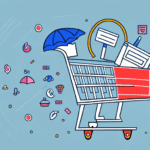Crafting a Connected Customer Journey for Maximum Engagement
Creating a seamless customer journey has become increasingly important in today's business landscape, and for good reason. A well-crafted customer journey can lead to maximum engagement, resulting in increased customer loyalty, higher conversion rates, and increased revenue for your business. According to a study by Forrester, companies that excel in customer journey mapping can see a up to 70% increase in customer satisfaction.
Understanding the Importance of Customer Journey Mapping
At the heart of a connected customer journey is customer journey mapping. This process involves visualizing the customer's journey across all touchpoints, from initial awareness to purchase and beyond. By identifying the emotions, needs, and pain points of your customers at each stage of their journey, you can optimize their experience and deepen their connection with your brand.
Customer journey mapping is not a one-time process, but rather an ongoing effort to stay in tune with your customers' evolving needs and preferences. By regularly reviewing and updating your customer journey map, you can ensure that your brand is always delivering a seamless and personalized experience that meets the expectations of your customers. According to Harvard Business Review, continuous journey mapping leads to a better understanding of customer behavior and improved service delivery.
The Benefits of a Connected Customer Journey for Your Business
A connected customer journey offers numerous benefits for your business. By providing a personalized experience tailored to each customer's needs and preferences, you can increase customer satisfaction and loyalty. According to a report by Salesforce, businesses that invest in customer journey mapping see a 50% increase in customer loyalty.
Additionally, a connected customer journey can result in increased conversion rates, higher average order values, and improved retention rates. Moreover, a connected customer journey can also help you gain valuable insights into your customers' behavior and preferences. By tracking their interactions with your brand across multiple touchpoints, you can identify patterns and trends that can inform your marketing and sales strategies. This can help you optimize your customer journey and improve the overall customer experience, leading to increased customer lifetime value and revenue for your business.
Essential Elements of a Connected Customer Journey
A connected customer journey must be fully integrated across all touchpoints, including your website, social media platforms, email marketing, and customer service channels. Additionally, it should be personalized and tailored to each customer's needs and preferences. Finally, it should be measurable and analyzed regularly to ensure continuous improvement and optimization.
One important aspect of a connected customer journey is the use of data and analytics to inform decision-making. By collecting and analyzing customer data, businesses can gain insights into customer behavior and preferences, allowing them to make informed decisions about how to improve the customer journey. This can include everything from optimizing website design to tailoring marketing messages to specific customer segments. By leveraging data and analytics, businesses can create a more seamless and personalized customer experience, ultimately driving customer loyalty and retention.
Identifying Your Customer Touchpoints for Maximum Engagement
Identifying all customer touchpoints is key to crafting a connected customer journey. Your touchpoints may include website visits, social media interactions, email communications, and customer service interactions. By analyzing each touchpoint and identifying opportunities for improvement, you can optimize the customer experience and enhance engagement.
One important aspect of identifying customer touchpoints is understanding the customer journey. This involves mapping out the various stages a customer goes through when interacting with your brand, from awareness to purchase and beyond. By understanding the customer journey, you can identify key touchpoints and tailor your messaging and interactions to meet the customer's needs at each stage.
Another important consideration when identifying customer touchpoints is the use of data and analytics. By tracking customer interactions across various touchpoints, you can gain valuable insights into customer behavior and preferences. This data can then be used to personalize the customer experience and improve engagement, by delivering targeted messaging and offers that are relevant to the customer's interests and needs. According to McKinsey, personalized marketing can deliver five to eight times the ROI on marketing spend and lift sales by 10% or more.
Optimizing Your Website to Enhance the User Experience
Your website is often the first touchpoint a customer has with your business, making it vital to optimize for maximum engagement. This can be achieved through clear and intuitive navigation, personalized content, and responsive design that caters to mobile users. Additionally, implementing chatbots and live chat can improve customer service and engagement.
Another important aspect of optimizing your website for user experience is to ensure that it loads quickly. Slow loading times can lead to frustration and a high bounce rate, which can negatively impact your search engine rankings. According to Google, even a one-second delay in page response can result in a 7% reduction in conversions. You can improve loading times by optimizing images, minimizing code, and using a content delivery network (CDN).
Furthermore, it's important to regularly update your website with fresh content to keep users engaged and coming back for more. This can include blog posts, videos, infographics, and other types of multimedia. By providing valuable and relevant content, you can establish your business as an authority in your industry and build trust with your audience.
Creating Personalized Content to Deepen Customer Connection
Personalized content is essential for creating a connected customer journey. This can include targeted emails, personalized recommendations, and customized product offerings. By tailoring the content to each customer's needs and preferences, you can deepen their connection with your brand and improve engagement.
One way to gather information about your customers' preferences is through data analysis. By analyzing their past purchases, search history, and demographic information, you can gain insights into what they are interested in and what they are likely to buy in the future. This information can then be used to create personalized content that speaks directly to their needs and interests.
Another important aspect of personalized content is ensuring that it is delivered at the right time and through the right channels. For example, if a customer has abandoned their cart, sending them a personalized email with a discount code may be the push they need to complete their purchase. Similarly, if a customer has shown interest in a particular product category, you can use targeted advertising to show them relevant products and promotions.
Leveraging Social Media Platforms for Greater Reach and Engagement
Social media platforms offer numerous opportunities for engagement and customer connection. By crafting a social media strategy that includes regular posting, engaging content, and targeted advertising, you can expand your reach and deepen your connection with your audience.
One of the key benefits of social media is the ability to gather valuable insights about your audience. By analyzing engagement metrics such as likes, comments, and shares, you can gain a better understanding of what content resonates with your audience and adjust your strategy accordingly. Additionally, social media platforms offer tools for conducting surveys and polls, which can provide even more detailed information about your audience's preferences and needs.
Another way to leverage social media for greater reach and engagement is by collaborating with influencers and other brands. Partnering with influencers who have a large following in your industry can help you reach a wider audience and build credibility with potential customers. Similarly, collaborating with other brands on social media can help you tap into their audience and expand your reach even further.
Utilizing Email Marketing to Nurture Leads Along the Customer Journey
Email marketing is a powerful tool for nurturing leads and guiding them along the customer journey. By leveraging automation tools and segmentation, you can send targeted emails that cater to each customer's interests and needs. Additionally, email marketing can be used to send personalized recommendations and offers that drive engagement and revenue.
One of the key benefits of email marketing is its ability to provide valuable insights into customer behavior. By tracking open rates, click-through rates, and other metrics, you can gain a better understanding of what types of content and offers resonate with your audience. This data can then be used to refine your email marketing strategy and improve the effectiveness of your campaigns. According to Campaign Monitor, segmented email campaigns can see up to a 760% increase in revenue.
Connecting with Customers through Live Chat and Chatbots
Live chat and chatbots offer a convenient and efficient way to connect with customers in real-time. By implementing these tools on your website and other channels, you can provide fast and personalized customer service that drives engagement and loyalty.
Moreover, live chat and chatbots can also help businesses gather valuable customer insights. By analyzing chat transcripts and customer interactions, businesses can identify common pain points, frequently asked questions, and areas for improvement. This information can then be used to optimize products, services, and customer experiences, ultimately leading to increased customer satisfaction and retention.
Measuring and Analyzing Your Customer Journey to Improve Engagement
Measuring and analyzing your customer journey is essential for continuous improvement and optimization. By tracking metrics such as customer satisfaction, conversion rates, and engagement levels, you can identify areas for improvement and optimize accordingly.
One important aspect of measuring and analyzing your customer journey is understanding the different touchpoints that customers have with your brand. This includes interactions with your website, social media channels, customer service representatives, and more. By mapping out these touchpoints and analyzing customer behavior at each stage, you can gain a better understanding of the overall customer experience and identify areas for improvement.
Another key factor to consider when measuring and analyzing your customer journey is the impact of personalization. By tailoring your messaging and offerings to individual customers based on their preferences and behavior, you can increase engagement and drive conversions. Analyzing the effectiveness of your personalization efforts can help you refine your strategy and improve overall customer satisfaction.
Staying Ahead: Future Trends in Crafting a Connected Customer Journey
The customer journey landscape is constantly evolving, with new technologies and trends emerging regularly. To stay ahead, it is essential to stay up-to-date on industry news and best practices, and to continuously experiment with new ideas and approaches that enhance engagement and customer connection.
In conclusion, crafting a connected customer journey is essential for maximizing engagement and driving business growth. By understanding the importance of customer journey mapping, optimizing all touchpoints, delivering personalized content, and regularly measuring and analyzing results, you can create a seamless experience that deepens customer connection and drives revenue.
One of the future trends in crafting a connected customer journey is the use of artificial intelligence (AI) and machine learning. AI can help businesses personalize the customer experience even further by analyzing customer data and behavior to make tailored recommendations and predictions. Additionally, chatbots and virtual assistants powered by AI can provide 24/7 customer support and assistance, improving the overall customer experience. As AI technology continues to advance, it will become increasingly important for businesses to incorporate it into their customer journey strategies. According to PwC, AI could contribute up to $15.7 trillion to the global economy by 2030.




















